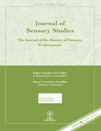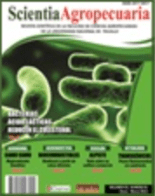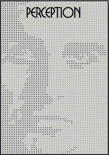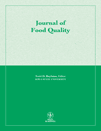
JOURNAL OF SENSORY STUDIES
Scope & Guideline
Transforming Sensory Research for a Flavorful Future
Introduction
Aims and Scopes
- Sensory Perception and Consumer Behavior:
The journal emphasizes the relationship between sensory perception (taste, smell, sight, touch, and sound) and consumer choices. Research often examines how sensory experiences shape preferences and behaviors in food and non-food products. - Multisensory Integration:
A core area of research includes the study of multisensory interactions and how they affect consumer perceptions. This includes examining how different sensory modalities (e.g., taste and olfaction) interact to influence overall experience. - Methodological Innovations in Sensory Evaluation:
The journal frequently publishes studies that introduce new methodologies or refine existing techniques for sensory evaluation. This includes various sensory testing methods such as Check-All-That-Apply (CATA), temporal dominance, and projective mapping. - Food and Beverage Sensory Analysis:
A significant focus lies on the sensory analysis of food and beverages, assessing attributes such as flavor, texture, and aroma to understand consumer acceptance and market trends. - Health and Sustainability in Sensory Studies:
The journal addresses the impact of health and sustainability on consumer perceptions, exploring how sensory attributes can influence choices related to health-conscious and sustainable products.
Trending and Emerging
- Impact of COVID-19 on Sensory Perception:
There is a notable increase in research examining how the COVID-19 pandemic has affected sensory perception and consumer behaviors, particularly regarding taste and smell, as well as the psychological impacts of sensory deprivation. - Sustainability and Ethical Consumption:
Studies focusing on sustainability, ethical consumption, and the sensory attributes of sustainable products are gaining traction, reflecting a broader societal shift towards environmentally conscious consumerism. - Technological Innovations in Sensory Research:
There is a growing trend towards utilizing advanced technologies, such as machine learning and sensory data analytics, to enhance sensory evaluation processes and consumer insights. - Cultural and Cross-Cultural Sensory Studies:
Emerging themes include investigations into cultural influences on sensory perception, highlighting how different cultural backgrounds affect food preferences and sensory experiences. - Emotional and Psychological Aspects of Sensory Experiences:
Research is increasingly exploring the emotional and psychological dimensions of sensory experiences, particularly how sensory stimuli can evoke emotions and influence consumer behavior.
Declining or Waning
- Traditional Sensory Evaluation Techniques:
There appears to be a waning focus on conventional sensory evaluation methods, such as simple hedonic testing, as researchers increasingly adopt more complex and innovative methodologies that better capture the nuances of sensory perception. - Niche Food Products:
Research on niche or less common food products has decreased, possibly due to a shift towards more mainstream and widely consumed items, reflecting consumer trends and market demands. - Basic Taste Perception Studies:
While foundational studies on basic taste perceptions (sweet, sour, salty, bitter, umami) remain relevant, their prevalence in the journal's publications is declining as the field moves towards more integrated and holistic approaches to sensory experiences.
Similar Journals

JOURNAL OF FOOD SCIENCE AND TECHNOLOGY-MYSORE
Championing Excellence in Food Research and ApplicationJOURNAL OF FOOD SCIENCE AND TECHNOLOGY-MYSORE, published by SPRINGER INDIA, is a distinguished peer-reviewed journal that has been contributing to the ever-evolving field of food science since its inception in 1974. With an ISSN of 0022-1155 and E-ISSN 0975-8402, this journal holds a commendable position in the Q2 category for Food Science, as per the 2023 metrics, and ranks #58 out of 389 in Scopus's Agricultural and Biological Sciences sector, achieving an impressive 85th percentile. The journal publishes high-quality research articles, reviews, and case studies that cover a wide array of topics, from food preservation to innovative technologies in food processing. Although it is not an open-access journal, it endeavors to disseminate essential knowledge and research strategies that advance food science and benefit both industry professionals and academia. The geographical reach of the journal, alongside its rigorous editorial standards, solidifies its stature as a pivotal resource for researchers, professionals, and students dedicated to the enhancement of food science practices and technologies.

Scientia Agropecuaria
Empowering research in agronomy, animal science, and soil science.Scientia Agropecuaria, an esteemed journal published by the Universidad Nacional de Trujillo’s Faculty of Agricultural Sciences, is dedicated to advancing research in the fields of Agronomy, Animal Science, and Soil Science. With a rich heritage since its inception, the journal has embraced Open Access since 2010, ensuring global dissemination of knowledge to researchers and practitioners. Hailing from Trujillo, Peru, it plays a vital role in the scientific community, capturing a Q3 ranking across multiple categories in the 2023 category quartiles, which reflects its growing influence, supported by its commendable Scopus percentile rankings. The scope of the journal is to publish original research, reviews, and insights that address critical issues and innovations in agriculture and related fields, making it a key resource for researchers, professionals, and students aiming to stay abreast of cutting-edge developments. As the journal continues its convergence until 2024, it remains an important platform for impactful contributions to the agricultural sciences.

PERCEPTION
Connecting Psychology, AI, and Sensory SystemsPERCEPTION is a leading journal published by SAGE PUBLICATIONS LTD, focusing on the multidisciplinary aspects of perception across various fields, including Artificial Intelligence, Experimental and Cognitive Psychology, Ophthalmology, and Sensory Systems. With a commitment to advancing knowledge and fostering innovative research, the journal has been in circulation since 1972 and is recognized for its rigorous peer-review process and significant contributions to the academic community. Its current impact factor and Scopus rankings position it within the esteemed Q2 and Q3 categories, making it a valuable resource for researchers and professionals aiming to explore the complexities of human perception and its computational models. Although PERCEPTION does not offer open access, it provides essential insights and findings that are particularly relevant for students and academics in psychology, neuroscience, and artificial intelligence. Addressing cutting-edge topics, this journal serves as a vital forum for the exchange of research ideas and methodologies in the evolving landscape of perception studies, making it a crucial asset for anyone dedicated to understanding this intricate field.

FOOD HYDROCOLLOIDS
Unlocking the Secrets of Hydrocolloids for Enhanced Food QualityFOOD HYDROCOLLOIDS is a premier peer-reviewed journal published by Elsevier, focusing on the interdisciplinary field of food science, particularly the role of hydrocolloids in food systems. Established in 1986, this journal has become a leading platform for disseminating innovative research and reviews that advance the understanding of hydrocolloids' chemical and physical properties, their applications in food technology, and their impact on food quality and safety. With a commendable impact factor and consistently ranked in the Q1 quartile across diverse categories—including Chemical Engineering and Food Science—FOOD HYDROCOLLOIDS stands at the forefront of cutting-edge research, evidenced by its top-tier Scopus rankings (8th in Food Science and 8th in General Chemical Engineering). Researchers, professionals, and students are encouraged to explore the wealth of knowledge available through this journal, showcasing advancements and best practices in the use of hydrocolloids for food formulation and processing.

Food Science of Animal Resources
Fostering Global Collaboration in Food Science and Animal WelfareFood Science of Animal Resources is a prestigious, peer-reviewed journal published by the Korean Society of Food Science and Animal Resources, serving as a vital platform for disseminating advanced research in the fields of Animal Science and Food Science. Since its inception in 2018, the journal has quickly established itself with an impressive Q1 ranking in both categories for 2023, indicating its relevance and influence in the academic community—evident by its ranking of #23 in Animal Science and Zoology and #78 in Food Science among thousands of journals. Operating on an Open Access model since 2019, it enables unrestricted access to cutting-edge research for a global audience, facilitating collaboration and innovation. Its commitment to quality and rigor makes it an essential resource for researchers, professionals, and students dedicated to advancing knowledge in food safety, nutrition, and sustainable practices within the animal resource sector. Set against the vibrant backdrop of South Korea, the journal aims to bridge gaps in knowledge and foster communication among scholars and practitioners worldwide.

Journal of Food and Nutrition Research
Bridging Research and Real-World Nutrition SolutionsJournal of Food and Nutrition Research, published by the VUP FOOD RESEARCH INST in Bratislava, Slovakia, serves as a vital platform for disseminating cutting-edge research in the fields of food science and nutrition. With an ISSN of 1336-8672 and an E-ISSN of 1338-4260, this journal emphasizes the importance of interdisciplinary approaches to address contemporary challenges related to food quality, dietary practices, and nutritional health. Notably recognized in the 2023 Scopus rankings, the journal is classified in Q3 quartiles for both Food Science and Nutrition & Dietetics, providing a forum for researchers aiming to enhance knowledge and practices within these domains. Those engaged in academia and industry will find the journal invaluable for its comprehensive scope, which covers novel food technologies, nutrition interventions, and the implications of dietary behaviors. Though not open access, the journal is dedicated to enriching the academic conversation and contributing to advancements in public health and nutrition policies.

JOURNAL OF VISION
Fostering Global Dialogue on Vision ScienceThe JOURNAL OF VISION, published by the ASSOCIATION FOR RESEARCH IN VISION AND OPHTHALMOLOGY INC, stands as a premier platform in the fields of Ophthalmology and Sensory Systems. Since its inception in 2001, this Open Access journal has worked to disseminate innovative research and groundbreaking discoveries that advance our understanding of vision science. With an impressive impact factor and ranked in the Q2 quartile for both Ophthalmology and Sensory Systems categories as of 2023, it offers a remarkable avenue for scholars and practitioners alike to share their insights and foster collaboration. Based in the United States, the journal maintains a commitment to accessibility, allowing researchers worldwide to engage with its comprehensive body of work. The JOURNAL OF VISION not only enhances the global dialogue around ocular health and sensory processing but also serves as an essential resource for professionals aiming to stay at the forefront of vision research.

JOURNAL OF FOOD QUALITY
Elevating Food Science through Quality ResearchThe Journal of Food Quality, an esteemed publication under Wiley-Hindawi, stands as a vital resource in the dynamic field of Food Science, established since 1977 and operating under an Open Access model since 2017. With its seat in the United Kingdom, this journal focuses on delivering high-quality research and insights pertaining to food safety, risk management, and quality assurance, reflected in its impressive Q2 ranking in both Food Science and Safety, Risk, Reliability and Quality categories in 2023. Researchers and professionals will find the journal’s contributions indispensable, particularly given its Scopus rankings that place it in the top echelons of its fields, highlighting its impact and relevance. By fostering an environment of knowledge sharing, the Journal of Food Quality not only enhances academic dialogue but also supports innovation and best practices in food research and industry applications.

Current Research in Food Science
Shaping the Landscape of Food Science InnovationCurrent Research in Food Science is a leading peer-reviewed academic journal published by Elsevier, specializing in the dynamic field of food science. Since its transition to an Open Access model in 2019, the journal has broadened its reach, contributing significantly to the dissemination of high-quality research. With strong rankings, including a Q1 quartile status in Applied Microbiology and Biotechnology, Biotechnology, and Food Science, it stands out as a pivotal resource for scholars. Based in the Netherlands, current research published within its pages spans a wide range of relevant topics, ensuring that researchers and practitioners stay abreast of the latest advancements. The journal's impressive Scopus rankings enhance its credibility, with a percentile standing in the 74th to 83rd range across relevant categories, underscoring its impact and importance in the academic community. Current Research in Food Science aims to foster the exchange of innovative ideas and foster collaborative efforts among researchers, making it an essential resource for those engaged in advancing the science and technology of food.

NFS Journal
Connecting scholars and practitioners through impactful research.NFS Journal, published by ELSEVIER, is at the forefront of research in the fields of Food Science and Nutrition and Dietetics, boasting an impressive impact factor that underscores its significance. With an Open Access model since 2015, the journal facilitates widespread dissemination and accessibility of high-quality research, making it a valuable resource for scholars and practitioners alike. Located in Germany, this journal has made its mark with its prestigious Q1 ranking in both Food Science and Nutrition and Dietetics as of 2023, positioning it among the top-tier journals in these disciplines. Additionally, it holds an outstanding standing in Scopus rankings, being placed at 10th out of 140 in Nutrition and Dietetics and at 27th out of 389 in Food Science, reflecting its influence and reach within the global academic community. The NFS Journal is dedicated to publishing the latest advancements and practices that shape our understanding of the relationship between food, health, and nutrition, appealing to researchers, professionals, and students eager to stay updated with novel insights and breakthroughs.